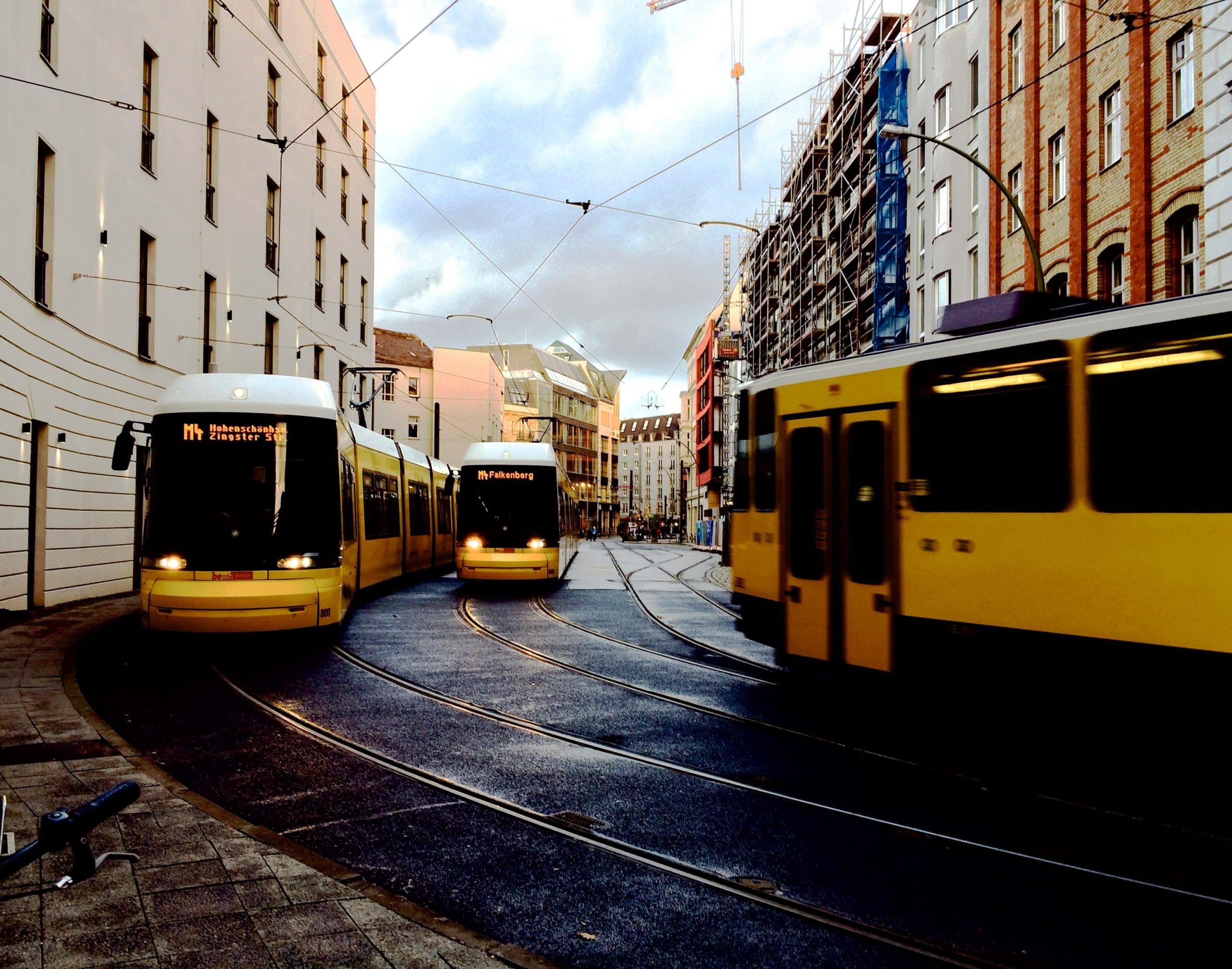How will ai influence the future of urban public transport?

When considering the future of urban mobility, one cannot help but envision a scenario where artificial intelligence (AI) stands at the helm, steering us towards an era of unprecedented convenience, efficiency, and safety. The urban landscape is already undergoing a metamorphosis, with technological advancements reshaping the very fabric of public transport. As cities continue to burgeon, the quintessential challenge remains: how do we move people in the most effective way? AI, with its myriad capabilities, from computer vision to machine learning, is poised to provide some compelling answers.
In this scenario, data reigns supreme, acting as the lifeblood for smart systems that will manage everything from traffic flow to vehicle coordination. The transportation industry stands at the threshold of a revolution, with AI being the catalyst that will transform urban transport into a model of modern efficiency. So, sit back as we explore the multifaceted role that AI will play in the future of public transportation.
Also read : How is ai transforming the publishing and media industries?
Artificial Intelligence in Urban Mobility
As urban centers continue to expand, the strain on public transportation systems becomes more evident. Congested roads, delayed buses, and overcrowded trains are daily tribulations for commuters. However, AI has the potential to alleviate many of these issues by enhancing the way transport systems are managed and operated.
Traffic Congestion and Flow Management
One of the most critical aspects where AI can make a significant impact is in managing traffic congestion. Utilizing real-time data and advanced algorithms, AI can optimize traffic signals, reduce idling times, and direct traffic more efficiently. Machine learning can predict traffic patterns and suggest alternative routes to prevent jams before they happen.
Also to discover : How will ai impact the future of automotive design and manufacturing?
Safety and Incident Response
When it comes to safety, AI has much to contribute. Computer vision technologies are capable of monitoring roads for potential hazards, allowing public transport agencies to respond swiftly to incidents. Advanced driver-assistance systems (ADAS) in vehicles can prevent accidents by alerting drivers to potential collisions or taking preemptive action.
Planning and Infrastructure Development
AI plays a pivotal role in transport planning and infrastructure development. By analyzing vast amounts of data, AI can assist in designing more efficient transport routes and suggest where to build new roads or rail lines. This makes the idea of smart cities more tangible, where urban planning is informed by intelligent insights.
The application of AI in urban mobility promises to transform the daily commute into a seamless experience, reducing stress and time spent in transit. The future of public transport lies in our ability to harmonize these advanced technologies with our ever-growing urban environments.
Autonomous Vehicles and Public Transport
The vision of autonomous vehicles (AVs) cruising through our city streets is no longer a futuristic fantasy—it’s a forthcoming reality. These vehicles employ AI to navigate safely and effectively without human intervention, and their integration into existing public transportation networks is a game-changer.
Integration with Public Transport Systems
Incorporating AVs into public transport networks can lead to a more adaptable and responsive system. Buses and trams that can operate autonomously will allow for more frequent and reliable service, as the limitations of human scheduling and driver availability are reduced.
On-Demand Mobility Services
The idea of on-demand mobility services, akin to ride-sharing but with AVs, could complement standard public transport routes. These services would use AI to match vehicles with passengers efficiently, optimizing routes in real-time and reducing the number of vehicles needed on the roads.
Reducing the Need for Personal Vehicles
With the rise of AVs, the need for personal vehicle ownership could diminish, leading to less congestion and a lower environmental footprint. This shift would fundamentally change the way we think about urban transport, creating a shared economy where mobility is a service rather than a personal asset.
The introduction of AVs into public transport is not without its challenges, including regulatory hurdles and ensuring public trust, but the potential benefits make it a pursuit worth the effort. The future of urban transport looks increasingly autonomous, and AI is the driving force behind this transformation.
Smart Infrastructure for Efficient Transport
At the core of a smart transportation network lies the infrastructure that supports it. AI can enhance this infrastructure, creating a smart system that facilitates the quick and safe movement of people across cities.
Intelligent Traffic Systems
AI can be integrated into traffic lights and signage to create intelligent traffic systems. These systems would respond dynamically to traffic conditions, reducing unnecessary wait times and improving the overall flow of traffic.
Predictive Maintenance
Infrastructure maintenance can be proactive rather than reactive with AI. By predicting when maintenance is required, transport authorities can avoid disruptions and extend the lifespan of their assets, such as roads, bridges, and tunnels.
Green and Sustainable Solutions
AI can contribute to the development of green and sustainable transport solutions. By optimizing routes and traffic lights for fuel efficiency, reducing the number of idle vehicles, and supporting electric public transport options, AI helps cities reduce their carbon footprint.
Smart infrastructure supported by AI not only contributes to the efficiency and sustainability of urban transport but also enhances the resilience of cities against the challenges of growth and climate change.
Data-Driven Decision Making in Transport Planning
In the realm of transport planning, the ability to make informed decisions is paramount. AI enables a data-driven approach, providing insights that were previously unattainable due to the sheer volume and complexity of the data involved.
Harnessing Real-Time Data
Access to real-time data is crucial for effective transport management. AI systems can analyze information from various sources, including traffic cameras, license plate recognition, and passenger counts, to provide a comprehensive view of the current state of the transport network.
Long-Term Strategic Planning
AI can process historical data to identify long-term trends and support strategic planning. By recognizing patterns in traffic flow, population movement, and transport demand, planners can make more informed decisions about where to invest in infrastructure and services.
Personalized User Experiences
AI enables the personalization of user experiences in public transport. By understanding individual travel patterns, AI can provide tailored recommendations for routes and services, making public transport more user-friendly and increasing its appeal.
Data-driven decision-making powered by AI fosters a more responsive and efficient transportation system that can adapt to the evolving needs of urban populations.
The Road Ahead: AI’s Role in Shaping Urban Transport
As we gaze upon the road ahead, the role of AI in shaping the future of urban transport becomes increasingly clear. The promise of smarter, safer, and more sustainable cities is intertwined with the advancement of AI technologies.
Overcoming Challenges and Embracing Opportunities
While the journey towards an AI-powered public transport system is filled with challenges—from ensuring data privacy to achieving interoperability between systems—the opportunities it presents are vast. The integration of AI can address many of the current pain points in urban mobility, offering a glimpse into a future where public transportation is the backbone of urban transport.
Collaboration and Innovation
The successful implementation of AI in public transport requires collaboration between technology providers, city planners, transport authorities, and the public. Innovation will be the key to overcoming technical and regulatory obstacles, ensuring that the benefits of AI are fully realized.
Empowering People Through Technology
At its core, the integration of AI into public transport is about empowering people. By creating more efficient and accessible transport systems, AI has the potential to improve the quality of life for city dwellers, making urban mobility more equitable and inclusive.
In conclusion, AI is set to revolutionize public transport in urban settings, promising a future where mobility is seamless, efficient, and sustainable. As AI continues to evolve, its influence will be felt not only in how we move but in the very structure of our cities. The era of AI-powered public transport is upon us, and it’s time to embrace the ride.
